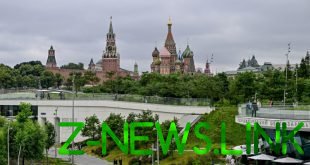
It is estimated that 80% of Russia’s luxury goods are sold in Moscow, and most top-end luxury brands have established flagship stores in the city’s center. As the end of the year rapidly approaches, high-end fashion consumers seem to be more than making up for the brief in-store spending pause that was experienced during the lockdown period, despite the economic uncertainty faced by the largest part of the population.
Many luxury lines have increased their expansion plans. In 2021, Bulgari unveiled the renovation of its flagship store on Kuznetsky Most Street, and in 2022, it plans to open a Bulgari hotel and residences near the Moscow State Conservatory. In June of this year, another Italian giant, Gucci, opened an opulent pop-up shop and bar on Malaya Bronnaya Street, importing green velvet and gold chairs, armchairs, and sofas from Italy for the occasion. It flooded the Instagram accounts of every influential Muscovite for the brief week of its existence.
Prada has just opened a temporary installation of floor-to-ceiling medicine cabinets, butterfly motifs, and a functional restaurant in collaboration with Damien Hirst for #PradaModeMoscow in the same area. According to Oleg Kaidalov, CEO of TAG Heuer in Russia, even though the sales of Swiss watches in Russia fell by 33% over the pandemic period, the TAG Heuer brand was not affected negatively, and its Russian division saw double-digit growth in sales last year.
One of the best examples of how quickly the luxury market is bouncing back is the ultra-luxury menswear brand Stefano Ricci, famed for clothing the 0.01% and which has boutique stores all over Russia. It has a presence in Moscow, St. Petersburg, Sochi, Kazan, Krasnodar, and Ekaterinburg, while also boasting boutiques in many Commonwealth of Independent States (CIS) countries such as Kazakhstan, Uzbekistan, Turkmenistan, and soon to be Kyrgyzstan (opening at the end of March 2022). Niccolo Ricci, the CEO of Stefano Ricci, said Russia and the CIS constitute around 20% of the company’s sales, which are projected to increase to 25% over the next few years. He went on to say that sales this year have mirrored those in 2019, in March they were up 58% compared to 2020.
Unlike other major Italian fashion houses like Gucci and Versace, Ricci is focused primarily on emerging markets. This is where it forges its strongest customer base. It has been a force in Russia since the 1990s, opening its first boutique in 2004. The new fall/winter collection for 2022-23 features pieces made from crocodile, cashmere, calfskin, mink, and fisher fur. In its Milan boutique, when shown a particularly expensive blouson made with a fisher fur collar and mink fur lining with a 100% vicuna and nubuck crocodile outer coating, one might ask – who can afford this? As the market indicates, Ricci’s very wealthy Russian, Chinese and Middle-Eastern clientele fit the bill.
In Russia in particular, the label you wear is socially significant. Clothes symbolize how much you earn and how secure you are in society. This feeds into both the growing worth of international luxury brands in the country and the production and sale of counterfeit versions of these brands. The upturn in luxury fashion is balanced by the flip side of the coin; we see discount stores like Fix Price and Familia (Russia’s TK Maxx) flourishing from a boosted interest in their bargain branded goods. There is a massive social disconnect between those who can afford to wear the “real” thing and those who seek to replicate it or wear it without breaking the bank.
The country at large is in a tumultuous economic position. Most ordinary people have suffered financially from economic sanctions, the increasingly high prices of goods, and the ongoing restrictions due to the pandemic. During this year’s run of ‘Black Friday’ sales, the turnover of goods increased by 73%, with the number of online purchases also increasing by 66%. The majority of people are looking to save money while searching for the best deals available.
Having said that, the Russian luxury market continues to strengthen, as it has been steadily doing over the past 20 years. Elite Russian buyers are back in full force, further ingraining the fact that Russia remains an oligarchical society when it comes to wealth distribution, with huge inequalities between those at the top and those at the bottom.
Despite predictions of a decrease in sales, the way in which the high-end consumer is feeding the recovery of the international luxury sector confirms the ultimate outcome of the pandemic. In terms of economic equality, the rich have certainly gotten richer while the poor continue to struggle.
For more stories on economy & finance visit RT’s business section
© 2021, paradox. All rights reserved.





